12 Major Global Innovations: August 2023

In this month’s wrap of up of the most innovative research from across the globe we feature technologies that bio-engineer biofuels, make biodegradable plastics, improve the movement and sensitivity of different robots and much more.
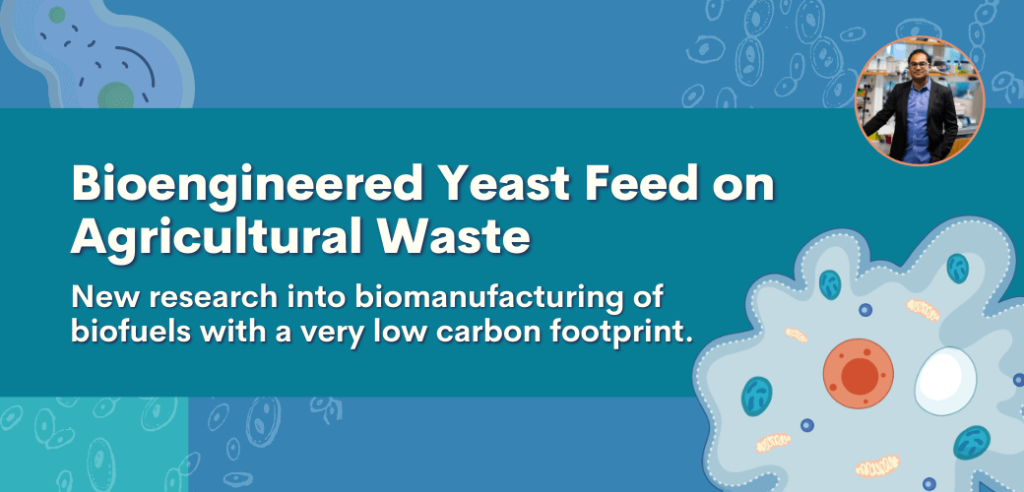
Bioengineered Yeast Feed on Agricultural Waste
Tufts University researchers have developed modified yeast capable of utilising a broader range of materials for sustenance. This innovative yeast can effectively consume sugars like xylose, arabinose, and cellobiose, which are frequently discarded after crop harvest, such as corn stalks, husks, leaves, and wheat stems. Annually, approximately 1.3 billion tons of this waste biomass is generated. Through genetic modifications of the yeast’s regulon, a regulatory “dashboard” involved in galactose consumption, the team successfully improved its capacity to process biomass sugars. By altering the sensor protein to accept xylose, arabinose, and cellobiose, the new regulon enabled yeast growth at rates comparable to native sugars like glucose and galactose. This remarkable feat sets the stage for enhanced production of biosynthesized products, including insulin, human growth hormone, antibodies, biofuels like isobutanol and isopentanol, as well as building blocks for bioplastics like polylactic acid. With this advancement, the potential to reduce dependence on petroleum sources while creating various consumer goods and packaging materials becomes conceivable. Read the full article here.
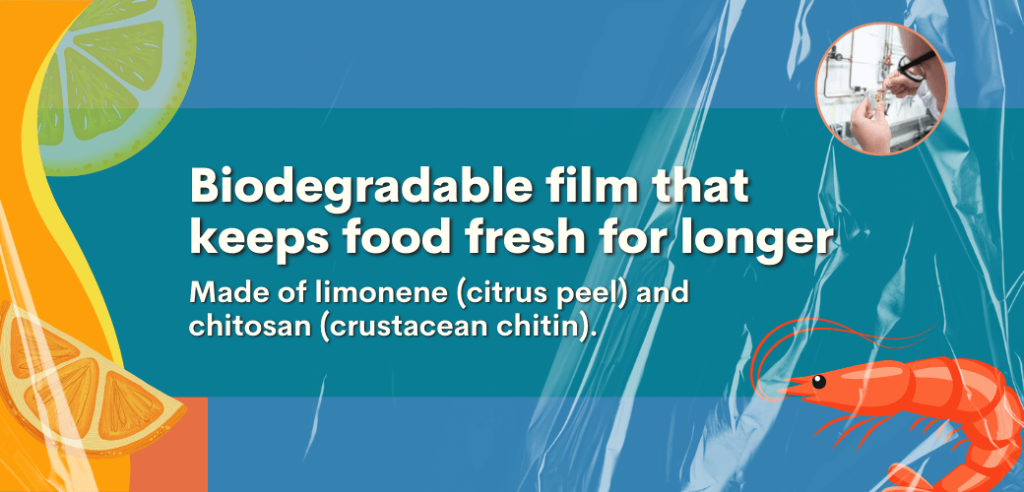
Research group develops biodegradable film that keeps food fresh for longer
Indiscriminate use of petroleum-derived packaging materials has led to an alarming plastic buildup in landfills and oceans. However, researchers in São Paulo, Brazil, have developed an innovative solution. They created a film using a compound derived from citrus fruit peel (limonene) and chitosan, a biopolymer from crustacean exoskeletons. By combining these materials, the scientists made a film with outstanding bioactive properties. They even found that the film with poly(limonene) surpassed the one with limonene, showing twice the antioxidant activity. This breakthrough offers exciting potential for sustainable and high-performing packaging. While the films aren’t available for commercial use yet, efforts to scale up chitosan-based plastic production and optimize the poly(limonene) process are underway. This remarkable research was conducted by scientists from the State University of Campinas and the São Paulo State Department of Agriculture and Supply. Read the full article here.
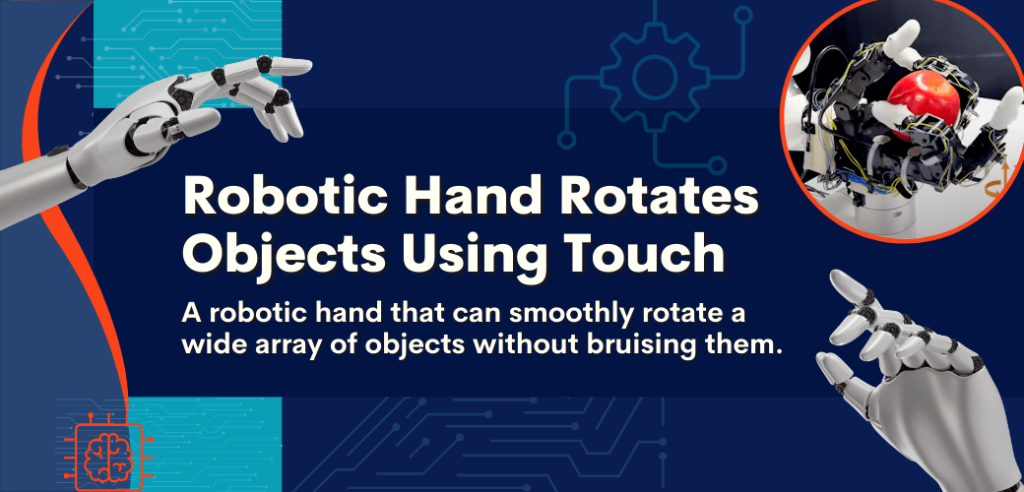
Robotic Hand Rotates Objects Using Touch, Not Vision
A team of engineers at the University of California San Diego has developed an exciting new approach inspired by humans’ ability to handle objects without vision. They’ve created a robotic hand that can rotate objects through touch alone, without relying on sight. Using 16 touch sensors attached to the robotic hand, costing just $12 each, the researchers have successfully rotated various objects, from toys to fruits, without damaging them. This innovative system relies on low-cost touch sensors that provide simple binary signals – touch or no touch. The team is now focused on expanding its capabilities to include even more complex tasks like catching, throwing, and juggling. Read the full article here.
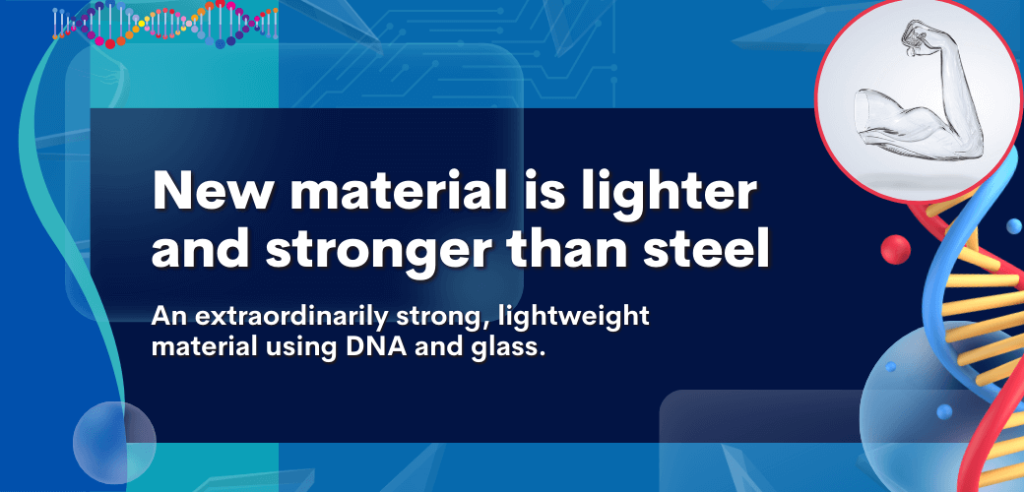
Strong as Glass
Researchers from the University of Connecticut (UCONN) have achieved a remarkable breakthrough. They’ve combined DNA and glass to create a super-strong, lightweight material. The process involves coating a self-assembling DNA structure with an ultra-thin layer of glass-like material. This innovation is a game-changer for engineering mechanical properties, surpassing the limitations of traditional metallurgical techniques. The possibilities are vast: lightweight body armor, advanced medical devices, and safer, faster vehicles. But the UCONN team isn’t stopping there. They’re pushing the boundaries even further by substituting stronger carbide ceramics for glass and experimenting with different DNA structures to maximise strength. With nanomaterials scientists at Columbia University and Brookhaven’s Center for Functional Nanomaterials involved, this collaboration is taking scientific breakthroughs to new heights. Read the full article here.
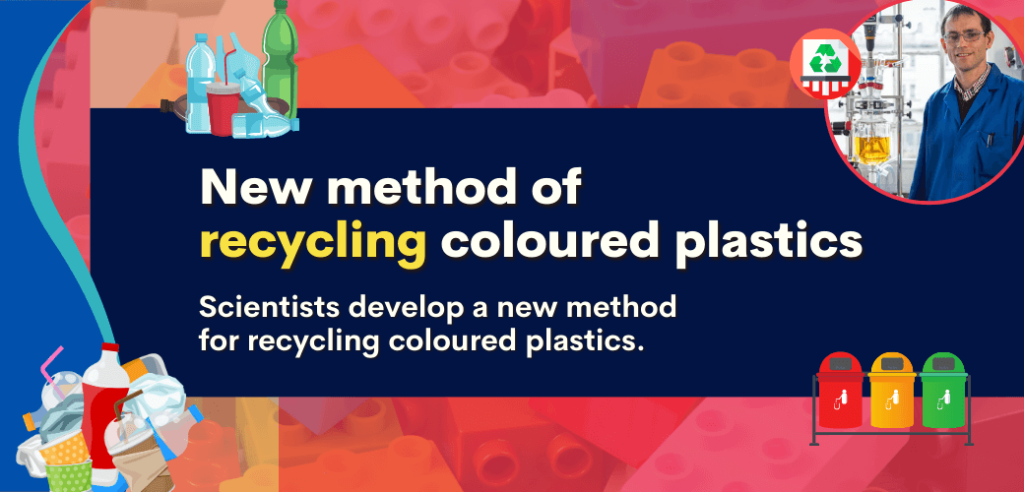
New method of recycling coloured plastics offers possible solution to “huge environmental challenge”, scientists claim
Scientists at Cardiff University have developed a groundbreaking method to recycle coloured plastics, tackling the issue of plastic pollution caused by consumerism. Using chemical depolymerization, the researchers efficiently break down coloured polymers, the main components of plastics, into their original form. This innovative process paves the way for a circular plastic recycling economy, reducing pollution in our land and oceans. By removing the colours during depolymerization, these plastics become recyclable and more sustainable. This breakthrough means that plastics can now be recycled indefinitely, maximising sustainability and minimising waste. Read the full article here.
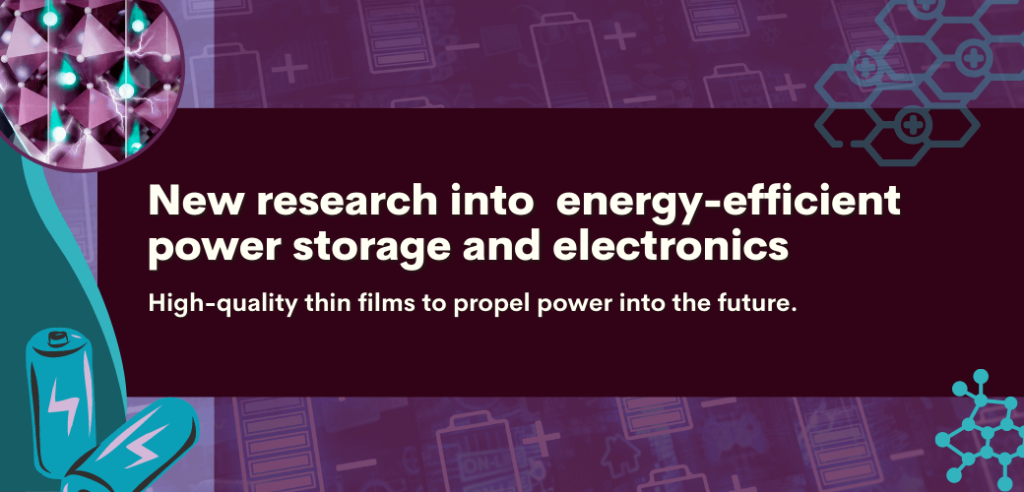
Leading the charge: New research paves the way for energy-efficient power storage and electronics
Researchers at the University of Pennsylvania, in collaboration with the Max Planck Institute and the University of Cambridge, have made a groundbreaking discovery in battery technology. By harnessing the incredible capabilities of niobium oxide, particularly the T-Nb205 form, they have unlocked the potential for faster charging batteries. This achievement paves the way for a wide range of applications, from high-speed battery charging to energy-efficient computing and beyond. The method used by the researchers allows lithium ions to move swiftly without compromising the complex structure of the T-Nb205 film. To delve deeper into the intricacies of this remarkable research, read the full article here.
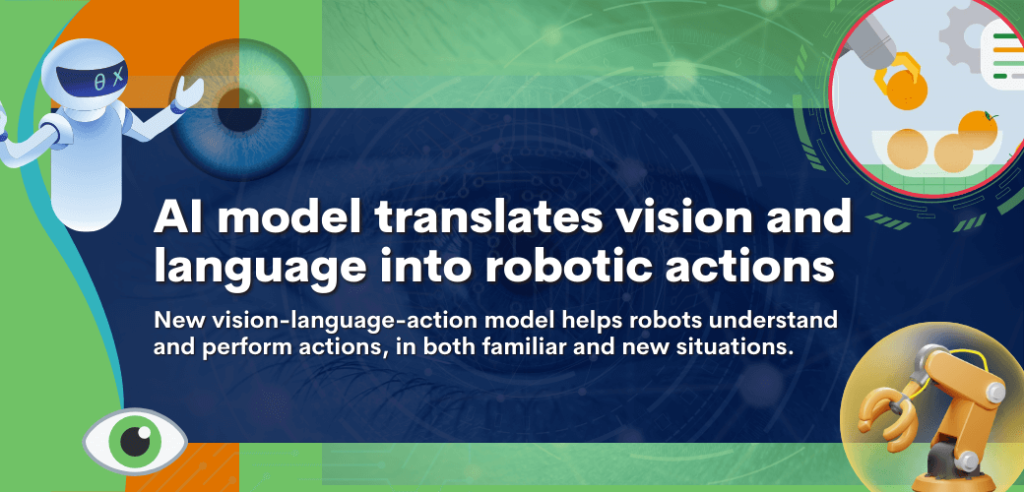
Speaking robot: Google’s new AI model translates vision and language into robotic actions
Google has recently unveiled its latest AI model, the RT-2. It’s an innovative vision-language-action system, an upgraded version of the RT-1. The RT-2 is trained on a combination of web text and images, which allows it to perform robotic actions directly. Just as language models learn general concepts from web text, the RT-2 can transfer these concepts to guide robot actions, even for previously untrained tasks. This breakthrough eliminates the need for complex and repetitive training when the robot’s action isn’t as crucial. Engineers must always weigh the cost-benefit, and with this new update, where information is immediately translated into action, the benefits far outweigh the costs. The team has tested the RT-2 in over 6,000 robotic trials, and the results are astounding. It performs just as well as its predecessor, the RT-1, on tasks it has been trained on, or “seen” tasks. However, when faced with new, unfamiliar scenarios, the RT-2’s performance nearly doubled to an impressive 62%, compared to the RT-1’s 32%. The RT-2 truly represents the future of robotics, offering the promise of rapid adaptation in novel situations and environments. Read the full article here.

Making renewable, infinitely recyclable plastics using bacteria
Scientists have achieved a significant breakthrough by engineering microbes that can serve as eco-friendly alternatives to traditional plastics. These microbes enable the production of poly (diketoenamine) or PDK, an indefinitely recyclable plastic. Unlike conventional plastics, PDK can be repeatedly broken down into pristine building blocks without any loss in quality, making it an environmentally beneficial option to replace finite and polluting petrochemicals. With the added advantage of lower costs and higher working temperatures, PDK holds immense potential for a wide range of applications, including adhesives, flexible items, building materials, and tough thermosets. This innovative solution paves the way towards achieving 100% bio-content in recyclable plastics and represents a significant step forward in addressing plastic pollution. This breakthrough is a result of collaboration among experts at the Department of Energy’s Lawrence Berkeley National Laboratory, including the Molecular Foundry, the Joint BioEnergy Institute (JBEI), and the Advanced Light Source. Read the full article here.

Researchers develop low-cost sensor to enhance robots’ sense of touch
Researchers from Queen Mary University of London, along with collaborators from China and USA, have created an L3 F-TOUCH sensor that enhances tactile abilities in robots. With this sensor, robots can get closer to “feeling” objects like never before. It’s a significant step towards achieving human-level dexterity in robotics. The lightweight, low-cost, and wireless L3 F-TOUCH sensor measures an object’s geometry and determines the forces needed to interact with it. Unlike most competitors, it has integrated haptic capabilities, allowing robots to effortlessly handle objects of any shape or size. This breakthrough paves the way for more advanced and reliable robotics. With the L3 F-TOUCH sensor, robots gain a sense of touch, enabling them to handle objects and perform complex tasks with ease. Read the full article here.
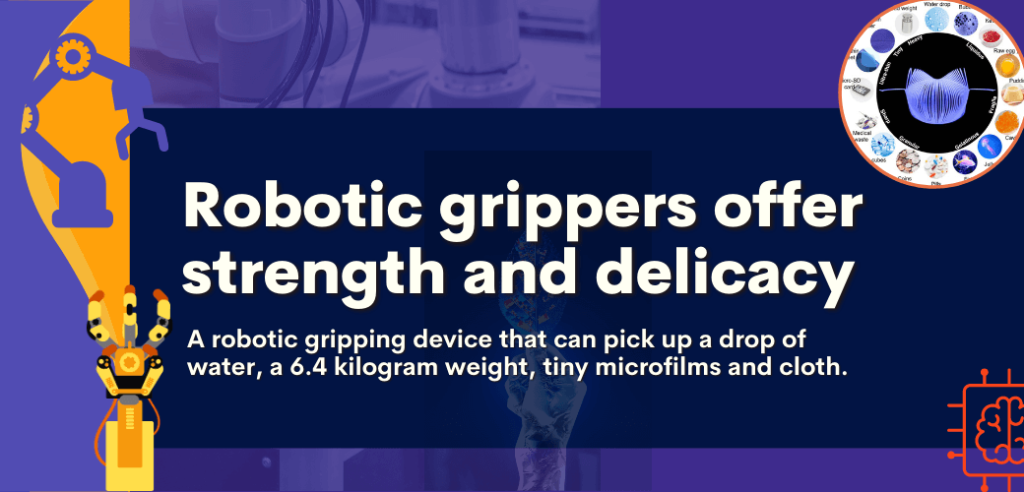
Robotic Grippers Offer Unprecedented Combo of Strength and Delicacy
Researchers at North Carolina State University have developed a groundbreaking robotic gripper. This device excels in both strength and gentleness, setting unprecedented standards in the market. It can delicately lift a droplet of water, handle a weight of 6.4 kilograms (14.1 pounds), fold a cloth dexterously, and even pick up microfilms 20 times thinner than a human hair. What’s astonishing is that despite its capabilities, this gripper weighs only 0.4 grams, boasting an impressive payload-to-weight ratio of about 16,000 – 2.5 times higher than the previous record. Moreover, its attractive characteristics are primarily driven by its structural design, allowing the use of biodegradable materials like sturdy plant leaves. This opens up possibilities for limited-use applications, such as food handling or biomedical materials. Beyond manufacturing, the researchers integrated this device with technology that utilizes electrical signals produced by forearm muscles, showcasing its potential for robotic prosthetics. In an engaging demonstration, the gripper successfully turned the pages of a book and plucked grapes off a vine, heralding a new era in gripping technology. Read the full article here.
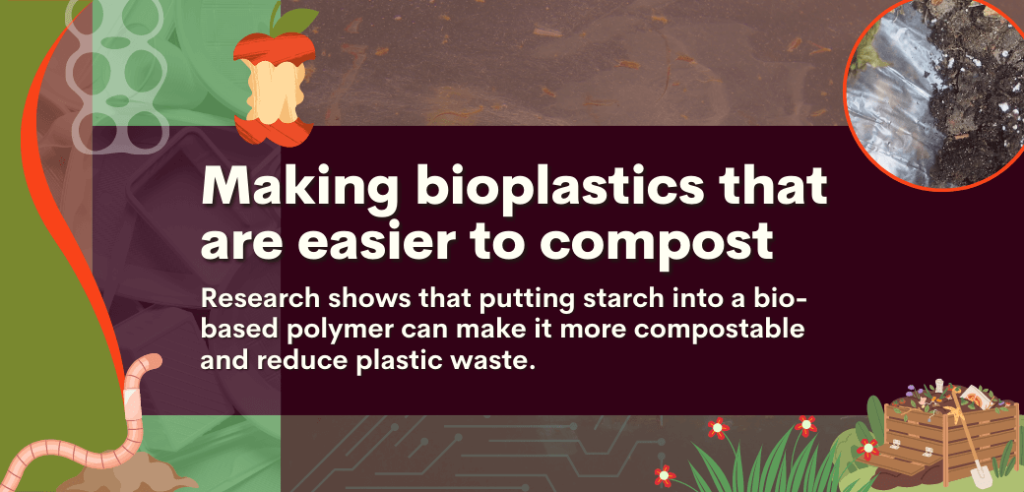
Making bioplastics that are easier to compost
Researchers from Michigan State University have made significant advancements in developing more biodegradable bioplastics. By adding starch to a bio-based polymer, they have created a compostable alternative to standard petroleum-plastics, reducing plastic waste. The team focused on polylactic acid (PLA), a bioplastic derived from plant sugars. Despite its natural decomposition into water, carbon dioxide, and lactic acid, PLA has faced limited acceptance by industrial composters due to extended degradation times. To solve this issue, the researchers integrated a carbohydrate-derived material called thermoplastic starch into PLA, resulting in faster composting. This breakthrough paves the way for completely compostable bio-based plastic packaging, addressing the global plastic crisis and promoting sustainability. Read the full article here.
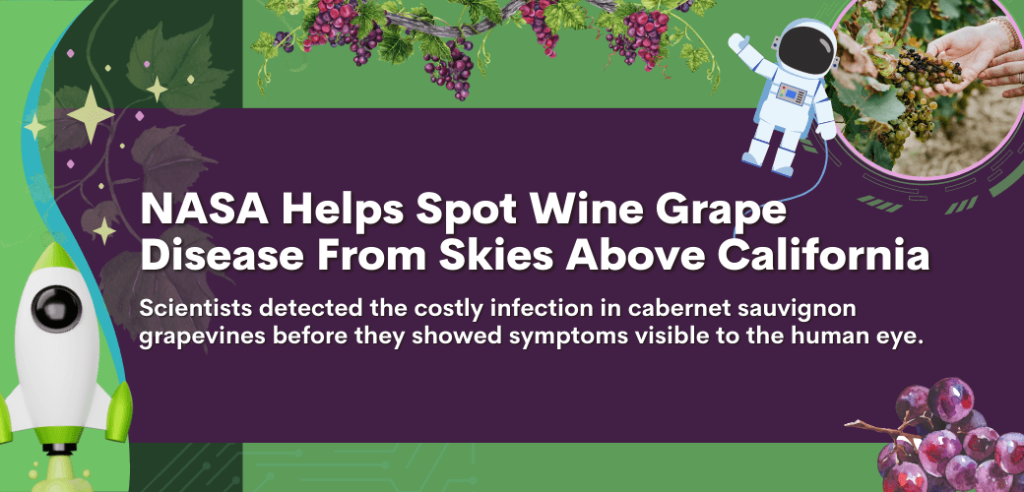
NASA Helps Spot Wine Grape Disease From Skies Above California
NASA can now detect grape disease accurately, way before the human eye, using an airborne science instrument. This helps prevent substantial financial damage to farmers in the long run. Originally designed to monitor hazards like wildfires, oil spills, and greenhouse gases, the instrument’s optical sensor has been reprogrammed to spot detrimental diseases that destroy a significant portion of global harvests every year. In recent studies, researchers focused on detecting GLRaV-3, a viral disease affecting the U.S. wine and grape industry, causing billions of dollars in damage annually. Thanks to NASA’s system, infected vines can be differentiated from non-infected ones, both before and after they show symptoms, with an impressive 87% accuracy. Early detection of GLRaV-3 gives grape growers up to a year’s warning to take action. These case studies highlight how air and space capabilities support ground-based pathogen surveillance efforts, potentially saving farmers billions in the future. Read the full article here.